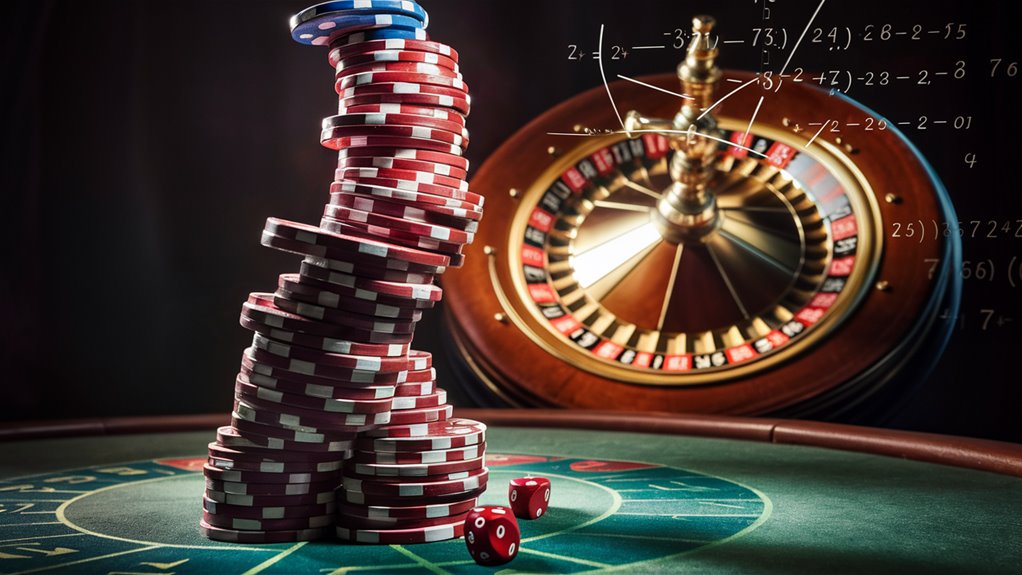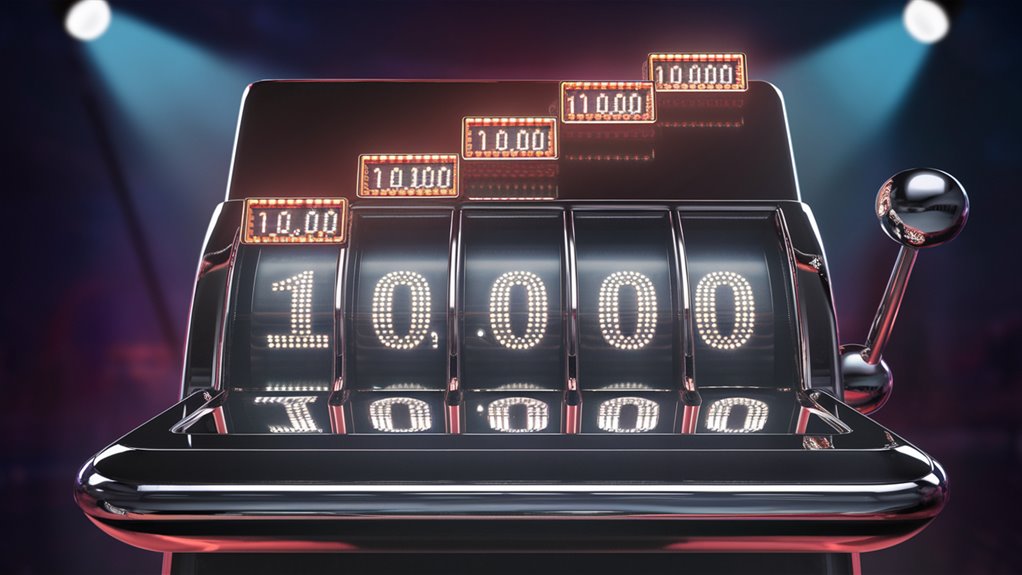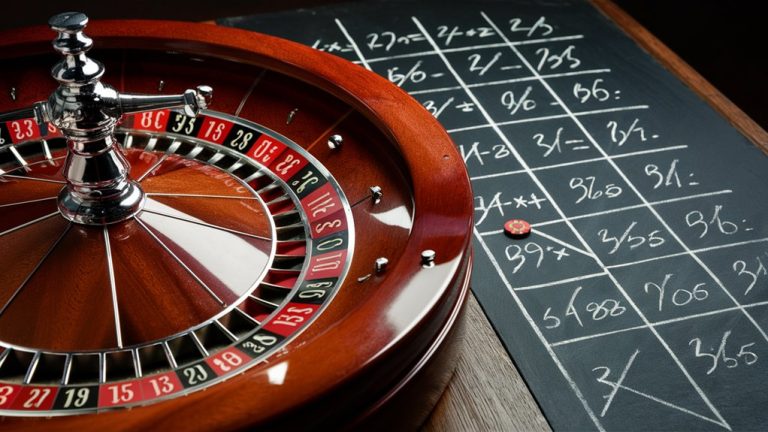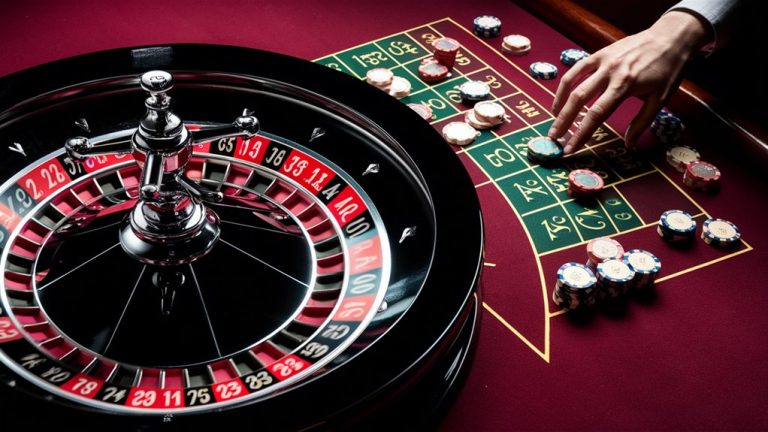
How Progressive Jackpots Work: A Math Breakdown

Basic Math of Progressive Systems
Progressive jackpot games are built on clear math rules that help them work and draw players. These game setups put in a part, 1-5% of each bet, to slowly grow big prize pools starting from set base amounts.
Chance and Mix Analysis
The math that holds up progressives is all about exact chance work. Take a three-reel slot with 20 unique icons – this setup makes 8,000 possible mixes, letting casinos work out exact win rates and payout shares. These math plans create all from jackpot rise speeds to the best base reset amounts.
Value Expectation and House Edge Tuning
Value expectation rules are key in making progressive setups, mixing house edge with bet parts. This math base makes sure of long money-making while keeping players in the game with growing jackpots. Near-miss cases, proven by stats, can up betting by 47%, showing how mind tricks mix with math rules.
Math Tuning for Casino Work
Clever math helps casinos set their progressive setups best. By looking at data patterns, betting ways, and win rates, bosses can tune both money goals and player activity levels. This careful math makes sure of smooth running while giving fun game times that bring players back.
The Basics of Progressive Systems
Progressive jackpot systems grow by taking a part of each bet to add to a big prize pool. The rate of growth is how much of each bet goes to the jackpot. For example, at a 2% rate on daily bets totaling $100,000, the jackpot grows by $2,000 each day.
Main Parts of Progressive Jackpots
- The base reset amount (starting jackpot)
- The growth rate (part of bet added)
- The win condition (needed win mix)
Math Setup and Workouts
The math design controlling progressive jackpots follows a clear plan. To find the usual jackpot amount, experts use:
Base + ((1/Win Rate) × (Bet Size × Growth Rate) × 0.5)
Typical Setup:
- Starting jackpot: $1 million
- Growth rate: 2%
- Win rate: 1-in-10-million chances
This setup often leads to jackpots going 25-75% above their reset value, based on known chance rules and growth rates. The full expected return mixes both the set base game pay and the progressive part added.
Understanding Chance and Odds
Progressive jackpot math needs you to get two key parts that set your win chances: base game win rate and jackpot trigger chance. These main parts work together to set the true odds of winning the big prize.
Base Game Chance Work
The base game win rate sets regular win rates during normal play. This math starts from dividing total win mixes by all possible mixes. In a three-reel slot with 20 icons per reel, players face 8,000 possible mixes (20 x 20 x 20). 더 많은 정보 보기
Jackpot Start Work
The jackpot start chance adds another math layer beyond normal game odds. This work looks at certain mixes that start the progressive part. For example, when the game needs five certain icons on a pay line, with each reel having one start icon among 20 total icons, the chance becomes 1 in 3,200,000 (20^5).
Mixed Chance Exam
To find true progressive jackpot odds, you must look at both chance parts together. This full exam shows the true math chance of getting the progressive win. Getting how these chance nuts and bolts work helps players know their real chances of winning big jackpots in today’s slot games.
Bet Parts and Pooling Work

Progressive jackpot bet rates are the math heart of prize pool growth through planned bet cuts. These rates go from 1% to 5% of each bet, with exact rates set by math plans and jackpot goals.
Progressive pooling work runs through linked game systems that feed into either local or wide-area jackpots. Local progressive systems gather parts just from machines within a single casino property.
In contrast, wide-area progressive systems gather parts across many game spots. The key pooling formula works as:
Total Pool = Base Jackpot + (Bet Part × Total Bets) – Past Wins
Set Values and Growth Work
The set value shows the sure minimum jackpot amount after a win. This key base number comes from the plan: Celestial Freedoms for House-Shifting Vibrance
Set Value = Base Jackpot + (Average Daily Play × Bet Part × Days to Goal)
This math setup lets us guess how long jackpots will take to grow again and their growth paths. The set pooling setup makes sure the prize pool keeps growing until someone wins, making the big prize amounts that keep players playing and taking part.
Set Values and Start Points
Progressive jackpot set values set the start point for new jackpot rounds after wins. These base amounts are found by deep math work using player activity clues, win rate goals, and planned jackpot edges.
Best Set Value Math
The best set value range often sits between 15-40% of target jackpot amounts, making balanced game action. This smart place makes sure of player stay while keeping enough room for jackpot growth. Set value fitting directly touches both quick draw and long hold power.
Math Framework
The main plan leading progressive systems follows:
Usual Jackpot = Set Value + (Bet Part × Time × Daily Play)
This plan drives jackpot work across both alone and linked systems. For linked progressive networks, set values are changed based on how many machines are linked, keeping even balance over the system and making sure of fair business work.
Scaling Thoughts in Networks
- Keep solid math work across all link units
- Make sure of fair start points
- Back smart growth paths
- Fine-tune player activity tips
This structured way to set value use makes strong progressive systems that give steady work and player joy.
Payout Math and Win Rates
Right math runs the complex link between payout math and win rates in modern jackpot systems. The key plan, Expected Value (EV) = Win Rate × Usual Payout, sets both casino money-making and player win chance. Win rate math follows the plan 1/n, where n shows all possible win mixes.
The progressive payout setup includes both set jackpot amounts and added parts. The progressive pool grows like this: Base + (All Bets × Bet Part), with usual bet parts going from 1-3% per bet. Return-to-Player (RTP) math uses the plan: (Total Payouts/All Bets) × 100.
Progressive jackpot systems have changing RTP values that change with jackpot size. The best point comes when the progressive amount gets to a level where thought RTP tops 100%, though casinos tune win rates to keep money-making.
Main Work Points
- Win Rate: Chance of winning per game
- Progressive Pool Growth: Part-based growth
- Changing RTP: Shifting return rates
- Best Payout Points: Mix of player draw and casino hold power
Player Mind Tricks and Betting Ways
Player thinking in betting places shows clear patterns that really shape betting choices. Three main mind factors shape progressive jackpot moves: chasing losses, near-miss effects, and jackpot base thinking.
Near-Miss and Betting More
Studies show that players bet 23-47% more after near-miss cases, matching with known mind reactions in brain studies. Progressive jackpot boards get 31% more bets than set-jackpot types, showing the big pull of seeing the prize grow.
Base Effects and How We See Money
The base trick creates clear betting ways in progressive jackpot games. When jackpots go over 1000x base bet size, player stay goes up by 42%, showing more loss are okay. This mind line starts the money chase thought, where players see past bets as adding up rather than separate betting moves.
What This Means for Betting Ways
Players looking at progressive meters show more focus through more bets and longer play times. The mix of near-miss events and base tricks makes strong mind drives that shape betting choices and player stay ways.
How Casinos Handle Risk
Managing progressive jackpots needs sharp math work to mix player fun with boss money safety. The core plan is about keeping good returns through smart tuning of house edge (H) against bet parts (C).
Good bosses keep bet parts between 1-3% of all bets, lined up with each game’s own house edge. Max risk points must be figured based on monthly game money (R) with jackpot tops smartly set at 3-6 months of money making.
Better Risk Controls
Stop-Loss Use
The must-have biggest jackpot plan gives a strong base for handling many progressives:
Biggest Jackpot = (Monthly Money × Risk Willingness Part) ÷ Game Count
Money Safe Plans
Keeping money safe from big progressive risks needs keeping money saves at 1.5x biggest progressive risk. This math safe zone makes sure of smooth work while guarding against big jackpot wins.
Bet Part Tuning
- Keep prize pool growth going strong
- Guard main game money
- Make sure of steady player focus
- Handle long money risks
Good jackpot setup needs keeping an eye on these key marks while sticking to set risk rules.


